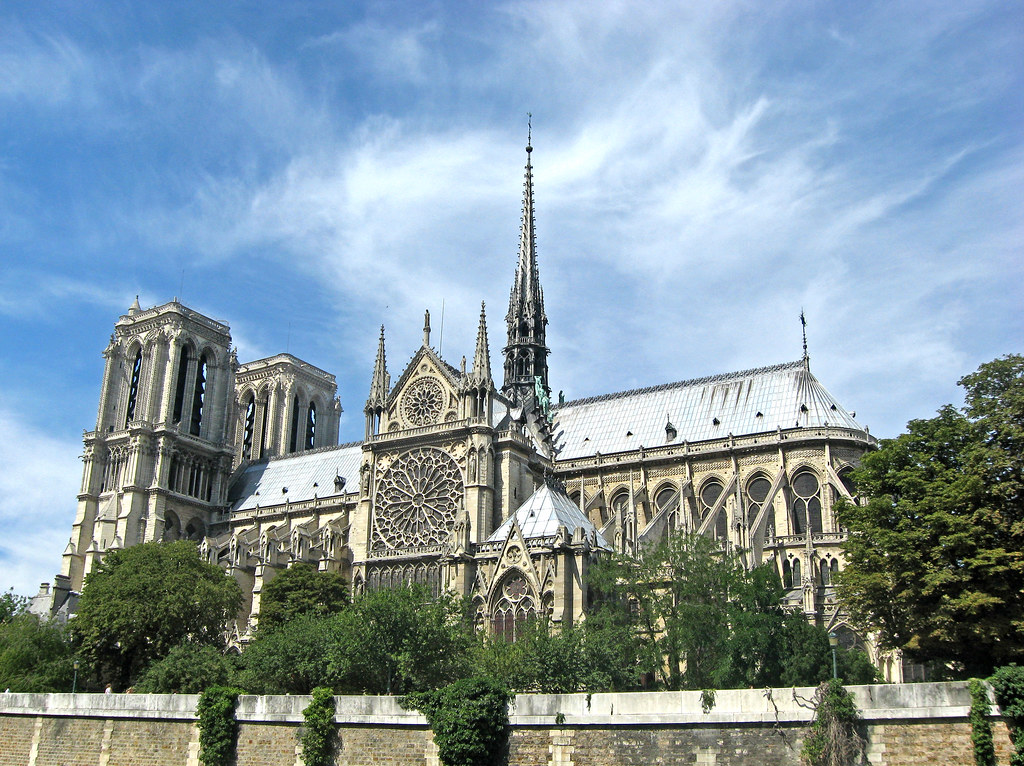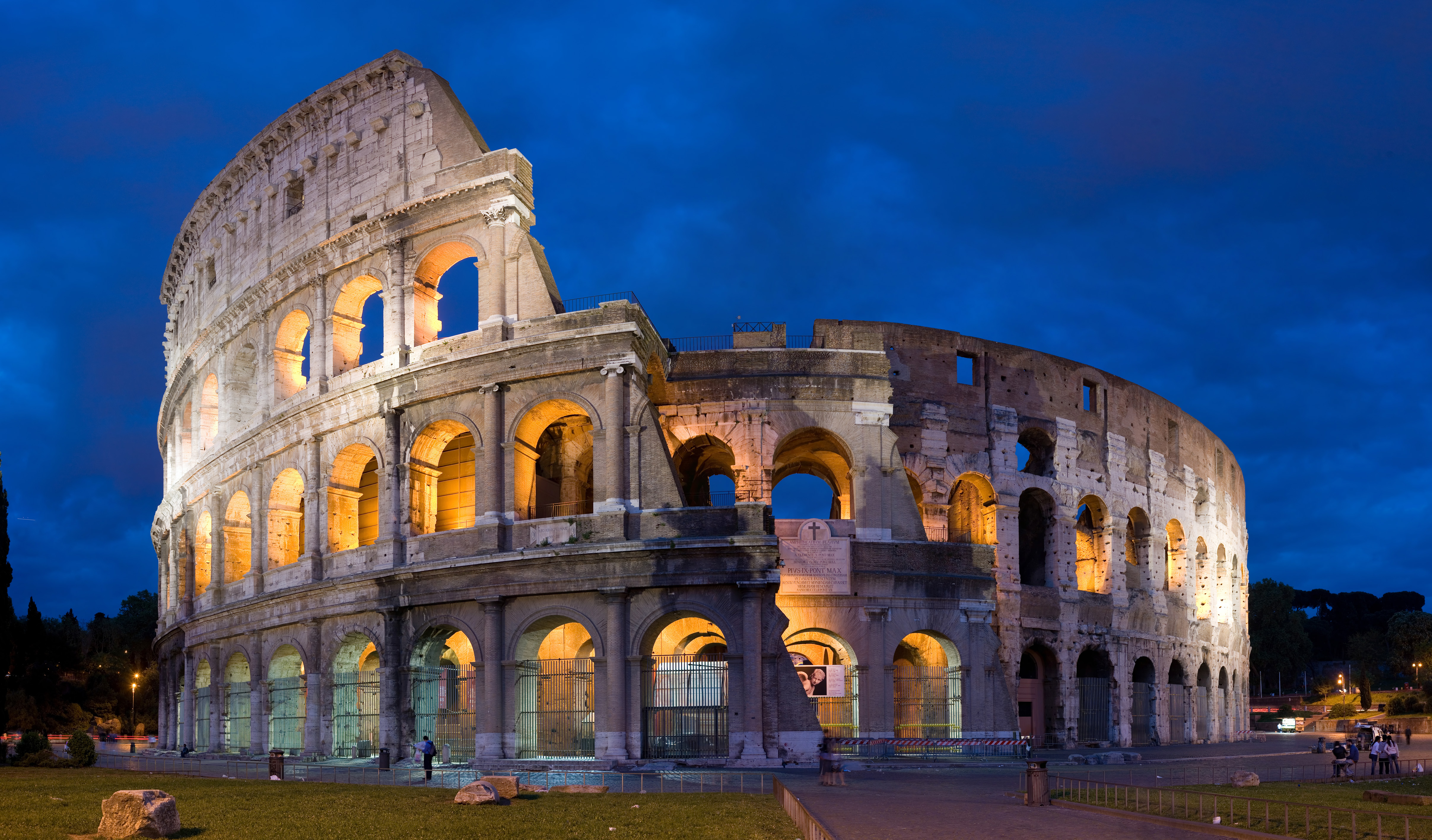
Paris
Eiffel Tower
The Eiffel Tower (la Tour Eiffel) ranks high on the list of places to visit in France and is the most-visited tourist attraction in the world. It's hard to believe that the structure was dismissed as a monstrosity when it was first unveiled. The iconic tower was designed by Alexandre-Gustave Eiffel for the Paris Exhibition of 1889, which marked the centenary of the French Revolution. The tower consists of 18,000 sturdy iron sections (weighing over 10,000 tons) held together by 2.5 million rivets. This innovative structure is now considered a masterful architectural feat and is the most emblematic sight in Paris. Reaching 324 meters in height, the tower was the world's tallest building until the Empire State Building was erected.

Louvre Museum
A sumptuous palace that was once the home of France's kings, the Louvre is the most important of Paris' top museums. Visitors enter the museum in the courtyard of the palace at the glass pyramid (designed by Ieoh Ming Pei in 1917). The Louvre displays 35,000 artworks (many considered masterpieces) - from antiquities to European paintings of the 15th to 19th centuries. It is impossible to see it all in one visit, but tourists can focus on a particular gallery, such as classical sculpture, Italian Renaissance art, or 17th-century French paintings, or take a self-guided tour to see the Louvre Museum's highlights. The most famous piece is the Mona Lisa or La Gioconda (or La Joconde in French) painted by Leonardo da Vinci in 1503-1505. Many tourists breeze through the museum just to glance at this one piece, but there are many other must-see works of art to admire even if time is limited.

Cathédrale Notre-Dame de Paris
Notre-Dame stands in the heart of Paris on the Île-de-la-Cité next to the Latin Quarter. An island in the Seine River, the Île-de-la-Cité is the historical and geographical center of Paris. On this small plot of land, the Romans built the Gallo-Roman city of Lutetia, and from the 6th century to the 14th century, the Kings of France resided here. The Cathédrale Notre-Dame de Paris was founded in 1163 by King Louis IX (Saint Louis) and Bishop Maurice de Sully, and the construction took more than 150 years. The cathedral was first created in Early Gothic style, while later additions (the west front and the nave) show the transition to High Gothic style. This impressive medieval monument is a triumph of Gothic architecture. Tourists are immediately struck by the ornamental design of the facade, with its profusion of sculptures and gargoyles, while elaborate flying buttresses provide structural integrity for the enormous building.

London
Buckingham Palace
One of Britain's most iconic buildings, Buckingham Palace is also the scene of London's most popular display of pomp and circumstance, the Changing of the Guard. Drawing crowds at 11:30am regardless of the season, this colorful and free display of precision marching and music also takes place at St. James's Palace, after which you can follow the band along The Mall as they march between sites. Buckingham Palace was built in 1837 and has been the London residence of the Royal Family since Queen Victoria's accession. If you're wondering whether the Queen is in, look at the flagpole atop the building: if the royal standard is flying day and night, she's at home. On special state occasions, she and members of the Royal Family may even emerge on the central balcony. When the Queen's away at her summer palace in Scotland, visitors can purchase tickets for tours of the State Rooms, the Queen's Gallery, and the Royal Mews.

Tower Bridge
Tower Bridge, its two huge towers rising 200 feet above the River Thames, is one of London's best-known landmarks (fascinating behind-the-scenes tours are available). Walk across for the best Tower views, as well as a glimpse of London Bridge (which many mistakenly believe Tower Bridge to be) in the distance farther along the Thames. At the south side of the bridge, you'll find Butler's Wharf, a funky section of town boasting multiple restaurants.

British Museum
Displaying one of the world's finest collections of antiquities, the British Museum contains more than 13 million artifacts from the ancient world. With priceless objects from Assyria, Babylonia, China, Europe, and elsewhere, it's hard to know where to begin in this expansive attraction. Most tourists head first for the museum's most famous exhibits: the controversial Elgin Marbles from the Parthenon, the Rosetta Stone, the colossal bust of Ramesses II, the Egyptian mummies, and the spectacular hoard of 4th-century Roman silver known as the Mildenhall Treasure. In addition to a well-stocked, on-site bookshop boasting an exhaustive array of titles on ancient history, archaeology and art history, there's a shop selling kids' games and souvenirs, along with one that sells replica sculptures and jewelry. For those able to linger longer, the museum offers a variety of lectures and workshops, plus a restaurant and café.
Rome
The Colluseum
As the Eiffel Tower is to Paris, the silhouette of the Flavian Amphitheatre is to Rome. The largest structure left to us by Roman antiquity, the Colosseum still provides the model for sports arenas - present day football stadium design is clearly based on this oval Roman plan. The building was begun by Vespasian in AD 72, and after his son Titus enlarged it by adding the fourth story, it was inaugurated in the year AD 80 with a series of splendid games. The Colosseum was large enough for theatrical performances, festivals, circuses, or games, which the Imperial Court and high officials watched from the lowest level, aristocratic Roman families on the second, the populace on the third and fourth.

Vatican City
The Vatican is the smallest independent state in the world, with an area of less than half a square kilometer, most of it enclosed by the Vatican walls. Inside are the Vatican palace and gardens, St. Peter's Basilica, and St. Peter's Square, an area ruled by the Pope, supreme head of the Roman Catholic Church. This compact space offers a lot of things to see, between its museums and the great basilica itself. Inside St. Peter's Basilica is Michelangelo's masterpiece, Pieta, along with statuary and altars by Bernini and others. The unquestioned highlight of the Vatican museums is the Sistine Chapel, whose magnificent frescoed ceiling is Michelangelo's most famous work. In the Vatican Palace are the Raphael Rooms; the Borgia Apartments; the Vatican Library, and a number of museums that include the Picture Gallery, Museum of Secular Art, Etruscan Museum, and others. The collections you can see in these cover everything from papal coaches to 20th-century art reflecting religious themes.

The Pantheon
The Pantheon - the best-preserved monument of Roman antiquity - is remarkably intact for its 2000 years. This is despite the fact that Pope Gregory III removed the gilded bronze roof tiles, and Pope Urban VIII ordered its bronze roof stripped and melted down to cast the canopy over the altar in St. Peter's and cannons for Castel Sant'Angelo. The Pantheon was rebuilt after damage by fire in AD 80, and the resulting brickwork shows the extraordinarily high technical mastery of Roman builders. Its 43-meter dome, the supreme achievement of Roman interior architecture, hangs suspended without visible supports - these are well hidden inside the walls - and its nine-meter central opening is the building's only light source.

Sources:
Google Images (Creative Commons licenses)
Paris
London
Rome